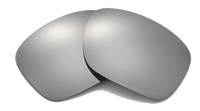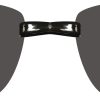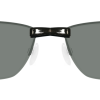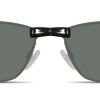for you If you’re a regular glasses wearer, it’s likely not uncommon to find yourself in a bit of a pinch when it comes to wearing sunglasses. Should you opt for a cheap pair of shades and merely deal with going about your day blind as a bat but protected from the sun? Or should you invest in expensive prescription sunglasses? Unfortunately, it’s not an easy decision, but it’s one that plenty of us face far too often.
The solution? The ideal clip on sunglasses lenses.
But, if you’ve yet to wander the world of clip-on lenses, it can be tough to know how to choose the best ones for your individual preferences. From polarized to specialty lenses, the clip-on realm is far from limited.
So, to give you a better idea of how to choose the best lenses that will work for you and your unique lifestyle, we’ll dive deep into a few factors that may potentially help you decide.
Let’s jump in!
1. Lens Color
One of the biggest components to choosing the ideal clip-on lenses is the lens color or tint. It can be a personal preference; however, the right lens color can play a large part in seeing well in particular circumstances. For example, grey is the industry standard color helpful for cutting through glare and reducing brightness; great for driving and outdoor activities. Brown is ideal for shading your eyes, but it also brightens your field of vision during cloudy moments. Other colors like green and red can help block the blue light that emits from electronics. Yellow lenses can improve visibility by raising contrast levels in low light.
2. Darkness
The darkness of your lenses also plays a considerable part in deciding which will work best for you. For sunlight protection, it’s essential to shoot for lens darkness that will block 75-90 percent of light. If you have sensitive eyes, it’s beneficial to opt for a darker lens that blocks a considerable amount of light to ensure that your vision is uncompromised by the sun. But, if you’re planning to wear them in mostly lower-light conditions, you may want a lens that blocks a lower percentage of light.
3. Polarized or Not?
Polarization is a popular choice for sunglasses, as it can be a useful addition for various activities. Polarized lenses help reduce any glare reflected off windshields, snow, and other surfaces, enhancing visibility. They often make sports and driving much safer than wearing non-polarized lenses. Polarization can also help you see through water, which is beneficial for fishing and other water sports.
4. Material
Clip-on lenses are most often made of Triacetate or Polycarbonate. Both are durable and impact-resistance, which is safer next to the eye. Not to mention, either choice is very lightweight, avoiding excess weight to your prescription frames, and they’re more scratch-resistant than glass. The primary difference between the two materials is Triacetate’s optical clarity, which is much higher than polycarbonate and mimics the human eye. So, depending on your needs, the material can make a big difference.
5. Specialty Lenses
If you’re looking for lenses that could potentially make your life easier, some clip-on lenses can be customized to add specialized coatings and different protective characteristics. Things like mirror coatings can provide you with clearer vision by reducing additional glare, while also offering a stylish look to your shades. Other considerations like progressive addition lenses can provide a better viewing experience at all distances and can add a dynamic dimension to your lenses.
Choosing the Ideal Clip-On Lenses
If they are properly fitted and well cared for, not only are clip on sunglasses are simple to use and proven to be as effective as genuine sunglasses, but they’re also safe to use and can protect your original lenses and frames from scratches. Take these five considerations into account to help you on your journey toward the perfect pair of clip-on shades.





